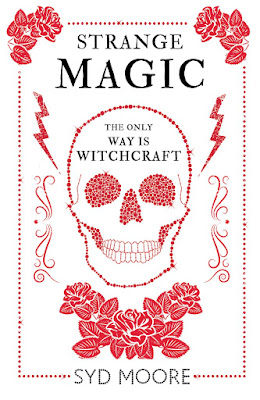 Block 46 (Roy and Castells 1)
Block 46 (Roy and Castells 1)Johana Gustawsson (trans Maxim Jakubowski)
Orenda Books, 31 May 2017
PB, 308pp
I'm grateful to the publisher for an advance copy of the book and to Anne for organising the tour (read her blog!)
This is the first in what's clearly intended to be a new crime series, featuring Canadian profiler ('Behavioural Insight Analyst' or BIA for short) Emily Roy and French true crime writer Alexis Castells, both currently based in London.
To add to the international flavour much of the action in this book takes place in Sweden, and its roots lie in the second world war German death camps. Roy and Castells need to untangle the threads of history while negotiating several different cultures, each with different expectations and assumptions.
The actual background to the book is as polyglot and interesting, it having been written and originally published in French and indeed having won several awards.
 |
| Johana Gustawsson |
That is an awful lot to establish, and it's a credit to both Gustawsson's writing and plotting, and to Jakubowski's translation, that it works well (as with any detective story you need to pay close attention: but I take that as a given). The story is soon moving and with a tantalising narrative from the killer we begin to see, not the solution, but the shape of the puzzle that Roy and Castells will have to solve (and yes, we do have a crime writer and a profiler working a case where most of the active investigation takes place abroad - irregular as anything I suspect but just go with it, it works fine).
That puzzle relates long ago events in the titular Block 46 to a series of grotesque murders taking place in both England and Sweden. But how could they be linked?
There is a meaty, challenging mystery at the heart of this book, and some great characters. I liked Emily a lot - maybe a bit of a nerd, you'd think, perhaps even one of the now sometimes fashionable almost-autistic. Actually, I was relieved to discover, Gustawsson isn't using that trope, there's a different reason for Emily's slight social distance, one we only learn at the very end of the book. Like several other characters (including that annoying Olofsson) she has stuff she's getting over. Indeed the presence of this meant that at time the book read as though it was in the middle of a series, not the beginning, and I wouldn't be surprised to see Gustawsson go back and write a prequel or two since she's obviously mapped out a lot about her characters. (I, for one, want to hear more).
While covering some dark subjects this is an excellent read, and it becomes more and more compelling throughout. Jakubowski serves it well in his translation by NOT making it read everywhere just as though it had been originally written in English: there is actually a slight sense of cultural distance maintained which helps to build unease as the death toll grows and the detectives are forced out of their comfort zone.
So, overall, really a promising start to a series and, as I said, I can't wait to read more about Roy and Castells.













